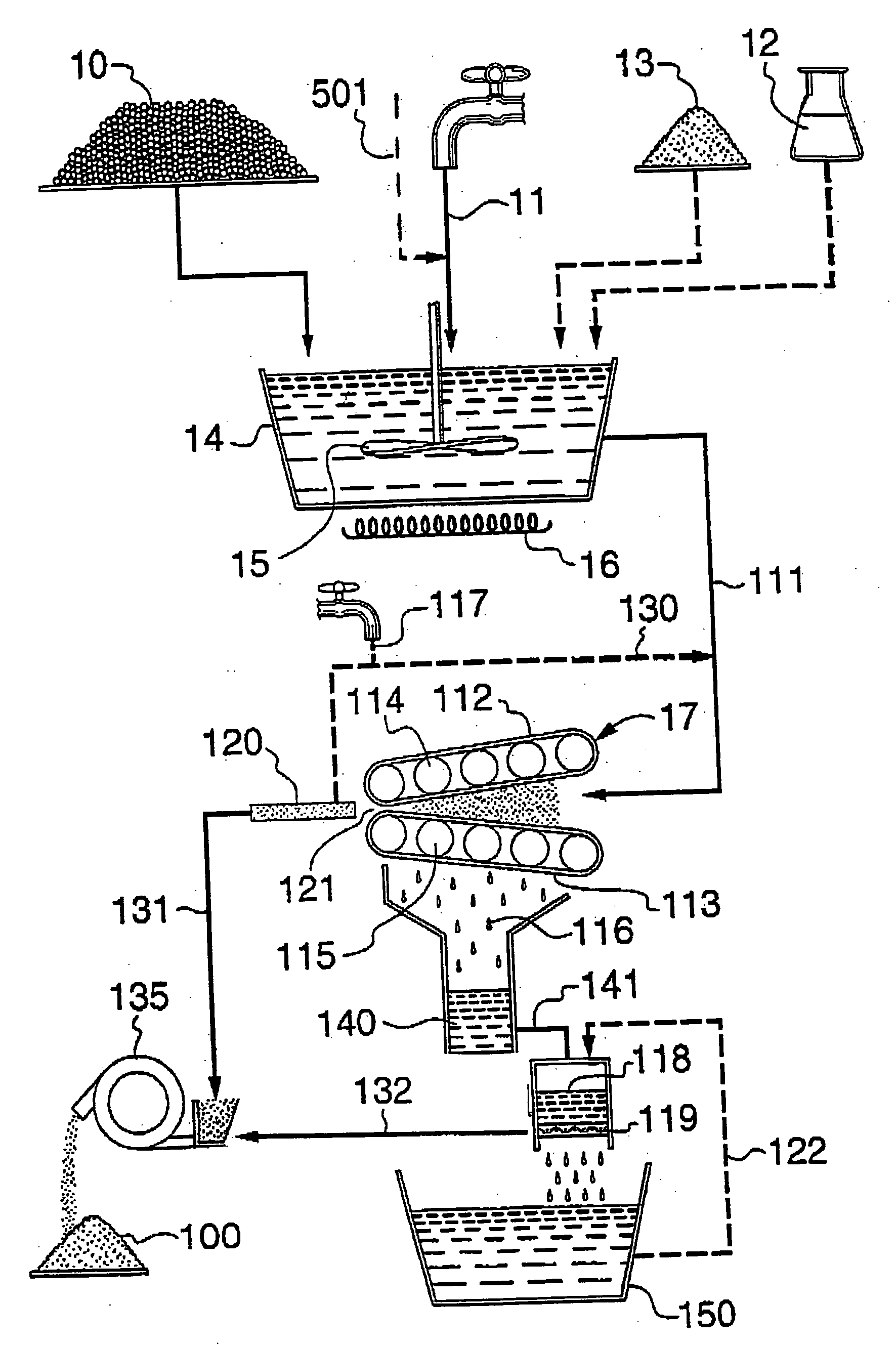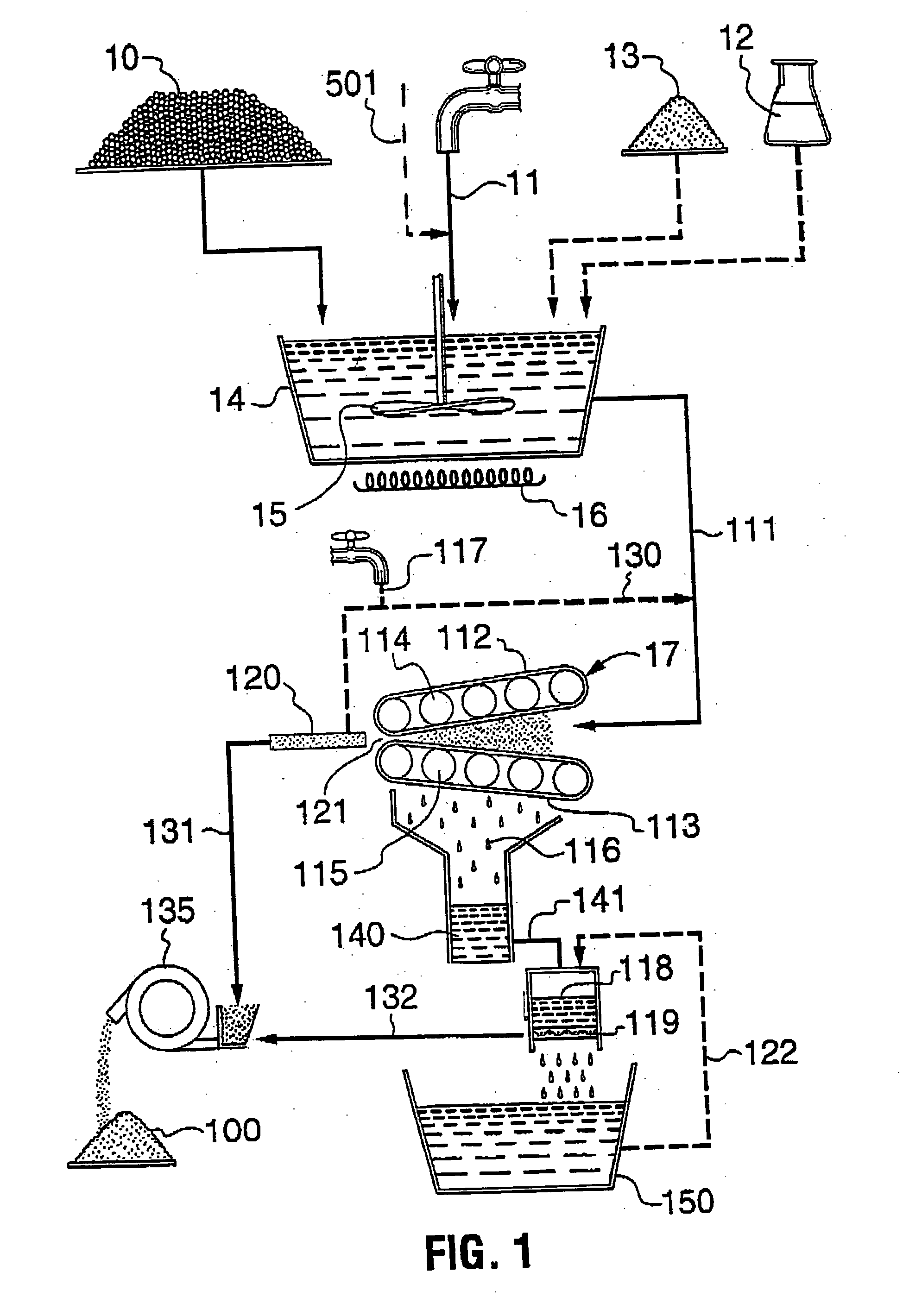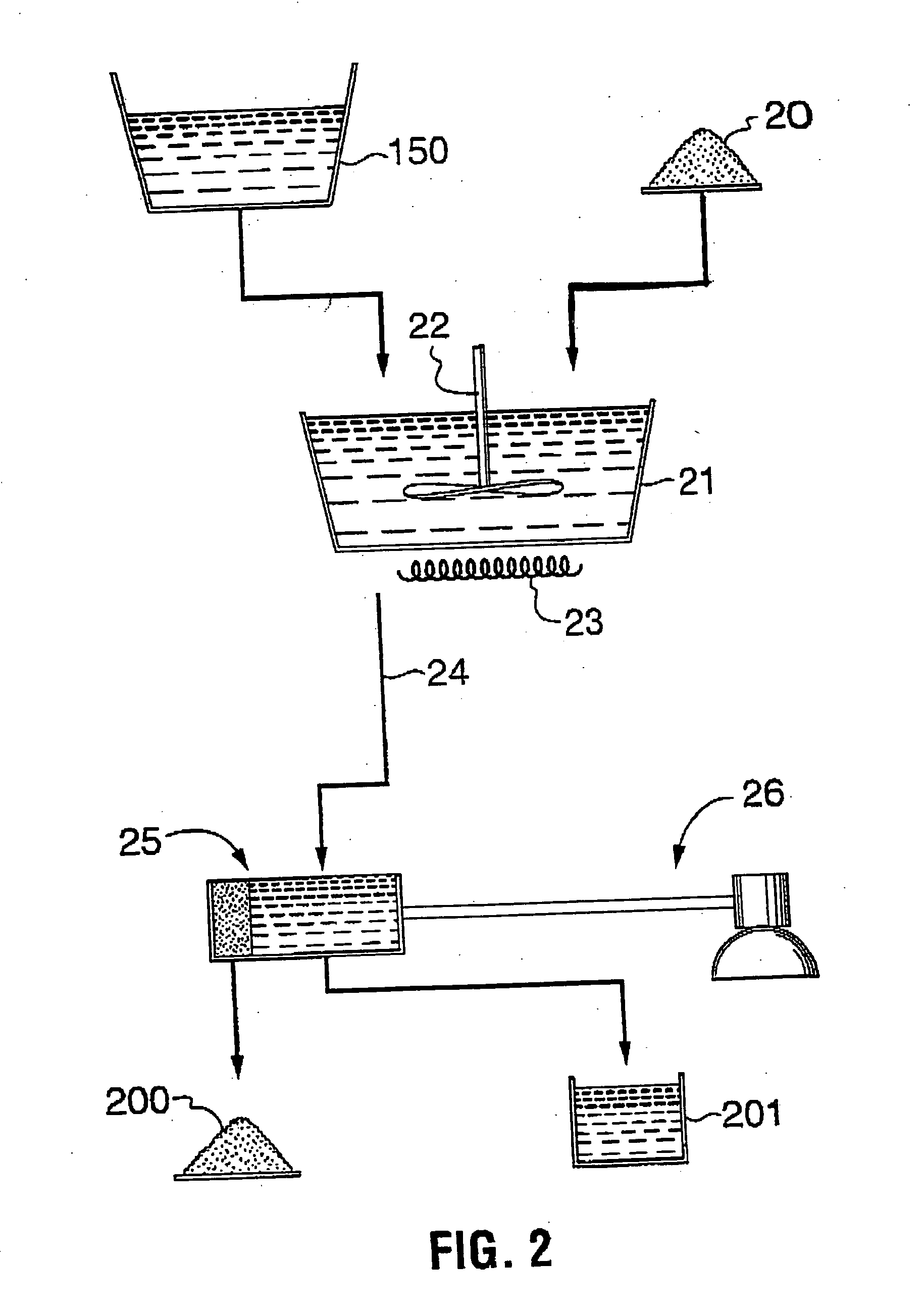Oilseed processing
a technology for processing oilseeds and seeds, applied in the field of oileed processing, can solve the problem that the machine should not have openings large enough to allow the passage of most of the seed hull parts, and achieve the effect of increasing the value of feed or food
- Summary
- Abstract
- Description
- Claims
- Application Information
AI Technical Summary
Benefits of technology
Problems solved by technology
Method used
Image
Examples
example 1
Initial Separation of Protein Rich Liquid and Ruminant Feed (Phase I Treatment)
[0038] 25 kg of hexane-laden, oil-extracted canola white flake was obtained from a commercial oilseed crusher in Saskatchewan, Canada. Hexane was allowed to evaporate from the material at ambient temperatures until hexane could not be detected by a solvent detector to give a desolventized white flake. The desolventized white flake was roller milled to break up large clumps and produce a consistent starting material for extraction. It was then mixed with 75 kg of water that had been preheated to 50° C. and 1.7 L of a 10% slurry of CaO was added to the mixture. The material was mixed in a ribbon mixer until an even consistency was obtained. The pH of the mixture was tested and found to 8.0. The material was then mixed for 10 minutes in the ribbon mixer.
[0039] The material was then passed through a continuous flow belt press (Frontier Technology Inc). The belt press compressed the material between two poly...
example 2
Concentration of Phytates in Solid (Phase II Treatment)
[0043] The depulped extract from the three passes through the belt press (Phase 1 liquid) was placed in 100 L steam kettle and 1.7 L of a 10% slurry of CaO was added to the extract. During the extraction phase the temperature of the extract had dropped to ambient temperature. The pH of the extract at ambient temperature after addition of CaO was 11.0. The flow of steam to the kettle was turned on until the temperature of the extract was increased to 50° C. The extract was maintained at 50° C. with constant stirring in the kettle for a 30-minute period.
[0044] The extract was then centrifuged at 5000 times gravity for 2 minutes in a swinging bucket centrifuge. The supernatant was poured off and collected (Phase II liquid). The solid pellets from the centrifuge were resuspended in an equal volume of water (ambient temperature) and centrifuged again at 5000 times gravity for 2 minutes to wash residual soluble material associated w...
example 3
Dephytinization of Solids (Phase III Treatment)
[0045] The Phase II solids generated in example 1 were stored and frozen until the day on which it was desired to do the Phase III treatment. However, if desired, Phase III treatment can be done immediately following phase II.
[0046] A 150 g fraction of stored and frozen Phase II solids was thawed. Four 10 g test batches were separated out from the fraction and each was mixed with 15 ml of water at room temperature. HCl was added to each test batch dropwise until the pH dropped to 3.5. The temperature of each test batch was then increased to 50° C.
[0047] Different amounts of phytase were added to each of the four test batches. The amounts were respectively 25, 15, 10 or 5 FTU (phytase units) of Natuphos® brand phytase (manufactured by BASF). One unit of phytase activity (1 FTU) is defined as the amount of the enzyme containing product that liberates 1 micromole of inorganic phosphorus per minute from an excess of sodium phytate at 37°...
PUM
| Property | Measurement | Unit |
|---|---|---|
| pH | aaaaa | aaaaa |
| pH | aaaaa | aaaaa |
| temperature | aaaaa | aaaaa |
Abstract
Description
Claims
Application Information
 Login to View More
Login to View More - R&D Engineer
- R&D Manager
- IP Professional
- Industry Leading Data Capabilities
- Powerful AI technology
- Patent DNA Extraction
Browse by: Latest US Patents, China's latest patents, Technical Efficacy Thesaurus, Application Domain, Technology Topic, Popular Technical Reports.
© 2024 PatSnap. All rights reserved.Legal|Privacy policy|Modern Slavery Act Transparency Statement|Sitemap|About US| Contact US: help@patsnap.com










